37 F. high in the Twin Cities Sunday.
31 F. average high on February 22.
24 F. high on February 22, 2015.
0" of snow on the ground as of 7 PM Sunday in the Twin Cities.
February 22, 1922:
A blizzard, ice storm and thunderstorms all occur on the same day
across Minnesota. Winds hit 50 mph in Duluth while thunderstorms were
reported in the Twin Cities. Heavy ice over southeast Minnesota with 2
inches of ice on wires near Winona. Over two inches of precipitation
fell. This was also one of the largest ice storms ever in Wisconsin
history with ice four inches in diameter on telegraph wires. One foot of
ice covered wire weighed 11 pounds. One killed and four injured in
Wisconsin.
Minnesota Winters: Fastest Warming in the USAIsolating
the signal from the noise is challenging, yet essential. A single storm
or frontal passage is the equivalent of a free throw shot at a
Minnesota Timberwolves game. That's weather. Climate is an analysis of
ALL free-throw shots at Wolves games since their founding in 1989. It's
easy to get fixated on a single play, but keep your eye on the big
picture; the long-term trends.
Crunching NOAA data
Climate Central
determined that Minnesota is the fastest warming state in the nation
during the winter season. MSP has warmed 1.1F per decade since 1970. So
far this winter record highs have outpaced record lows by a 3 to 2
margin across the USA. El Nino is spiking or "juicing" the background
warming already underway. That accounts for thin ice on Minnesota lakes
in late February.
Don't write winter off just yet; we'll see more
(fleeting) spasms of frosty air. Models bring a blustery arctic front
into Minnesota Saturday; a few subzero lows possible Sunday and Monday
before we warm up the first week of March.
Winter is fading fast but I wouldn't retire that favorite parka just yet.
 Every State's Temperature Trend for Every Season
Every State's Temperature Trend for Every Season.
Yes, Minnesota is warming, especially during the winter months, in fact
no other state (except for possibly Alaska) is warming faster. Here's
an excerpt from
Climate Central: "..
.If
you look at all four seasons across all of the Lower 48 states — for a
grand total of 192 state-season combinations — there are only three
instances of cooling. The Dakotas and Iowa are cooling ever so slightly
in summer. Otherwise, there’s only one direction temperatures have gone:
up. Snow cover in particular plays a role in why winters are heating up
so fast from Montana to North Carolina. Or more specifically, it’s a
lack thereof. As temperatures rise, snow is decreasing — and in many
cases being replaced by rain. Replacing light snow with dark ground means more of the sun’s energy is absorbed leading to a faster increase in warming..."
 Decadal Warming Rate
Decadal Warming Rate. Map above courtesy of
WXshift. Minnesota ranks first (since 1970), Wisconsin a close second during the winter season.
How Much Warmer Was Your City in 2015? The New York Times has a
terrific interactive page that allows you to find out; here's an excerpt: "
Scientists declared that 2015 was Earth’s hottest year on record.
In a database of 3,116 cities provided by AccuWeather, about 90 percent
of them were warmer than normal. Enter your city in the field below to
see how much warmer it was last year..."
 Average Snow Cover in the Twin Cities
Average Snow Cover in the Twin Cities. 90 days a year with at least 1" or more on the ground? Here's an excerpt from
Current Results: "
For
nearly all of winter along with some of early spring and late fall,
Minneapolis has at least an inch of snow on the ground. A snowpack that
gets to ten or more inches deep can cover the city anytime from November
to April. The snow accumulates most during December, January and
February. Typically, on six or seven days in January and in February
plus another five days in December, the snow depth in Minneapolis tops
ten inches..."
Nuisance Snow on Tuesday.
Models print out about a tenth of an inch of liquid precipitation
Tuesday, which may translate into a coating to an inch of
(slushy/sloppy) snow. With temperatures above 32F most roads will
probably be wet. 84-hour NAM accumulated snowfall forecast: NOAA and
AerisWeather.
About As Exciting As It's Going to Get Anytime Soon.
A "storm"? Old-timers might call it "flurries". Any big storms detour
well south and east of Minnesota into the first week of March; a fading
(but still significant) El Nino signal helping to keep us drier and
milder than average, overall, the next couple of weeks.
A Sharp, Quick Arctic Smack.
No prolonged polar air; the sun is too high in the sky now and the
pattern doesn't favor an extended spell of shivering. But cold air is
building and there's a good chance Sunday and Monday will bring back
memories of January. 10-day 2-meter GFS temperatures: NOAA and
AerisWeather.
Parka Weather.
Models show subzero wind chills late Saturday into Sunday morning, as
cold as -13 to -27 by 7 AM Sunday. Something to look forward to.
Graphic: Aeris Enterprise.
One More Wintry Slap.
If it's any consolation any pain will be brief, and it won't be nearly
as cold as it was back in mid-January. After a sloppy mix Tuesday with
highs near 40F temperatures run close to average, until Tuesday when a
sharp cold frontal passage whips up 20-40 mph winds and tumbling
temperatures. The 11th (and probably last) night below zero in the metro
may come Sunday morning before a rapid rebound next week. Graphic:
WeatherSpark.
Will the Minnesota River Flood This Spring?
Less snow cover, less frost in the ground - the potential for (river)
flooding now hinges on the risk of heavy rain and snow in March and
April. Here's an excerpt from
The Chaska Herald: "...
The
NWS report notes that the area had a wet November and December followed
by a drier January and February, with a below-normal snow pack and
frost depth. With spring flooding, the "main driver" will be heavy rain
fall in areas with high soil moisture. In the Minnesota River valley,
that means a "slightly above normal" chance for spring flooding.
"Especially from the Redwood River downstream," notes the NWS report..."
Tropical Cyclone Winston Makes Category 5 Landfall; Strongest on Record in Fiji. Here's a link to a terrific explainer and story update at
The Weather Channel: "...
Tropical Cyclone Winston raked across Fiji Saturday with Category 5 winds,
the strongest landfalling tropical cyclone on record in the South
Pacific archipelago. Winston is now located west of Fiji and is forecast
to curl southward away from land while weakening the next few days.
According to the U.S. Joint Typhoon Warning Center (JTWC), Winston made
landfall along the north coast of Fiji's largest, most populous island,
Viti Levu, Saturday evening, local time (Fiji is 17 hours ahead of U.S.
Eastern standard time), packing estimated maximum sustained winds of 180
mph..."
Weather Wise: How Are Tornadoes Identified?
New dual-polarization Doppler is so sensitive it can track tornado
debris lofted into the air, helping to confirm that a tornado is, in
fact, on the ground. Here's an excerpt from
Florida Today: "...
But
how do meteorologists know if a tornado has touched down or not?
Obviously, eyewitness accounts or footage could help confirm things, but
given that it was dark and the rotation was seen initially in an area
without much, if any population, that wasn’t to be. Instead, during an
event, forecasters look for a tornadic debris signature on radar. “If
there is a tornadic debris sign on radar, that will give us
confirmation,” Kelly said. “At that point, we would update the warning
probably to OK, we have more confidence now that there is a tornado on
the ground.” Kelly adds that the strength makes the debris signatures
“more pronounced.” Essentially, the higher that the debris field is, the
stronger the tornado is..."
El Nino Weakening, Stage Set for La Nina and Possible Dry Winter Next Year. The pendulum may be about to swing in the opposite direction. Here's an excerpt from
KQED Science: "
Federal
climate scientists say the near-record El Niño conditions in the
Pacific Ocean have peaked and are slowly waning. Forecasters now say
conditions are likely to flip to their opposite phase, known as La Niña
by late summer or early fall, which could set the stage for another
drier-than-normal winter and prolonged drought in California. “We are
reasonably confident that there will be a La Niña,” says Huug van den
Dool, seasonal forecaster at NOAA’s Climate Prediction Center, “but we
plead ignorance as to whether this is going to be a small, moderate, or
strong La Niña...” (Image above:
NOAA NCEP).
El Nino is Causing Global Food Crisis, UN Warns. Here's an excerpt from
The Guardian: "...
Severe
droughts and floods triggered by one of the strongest El Niño weather
events ever recorded have left nearly 100 million people in southern Africa,
Asia and Latin America facing food and water shortages and vulnerable
to diseases including Zika, UN bodies, international aid agencies and
governments have said. New figures from the UN’s World Food Programme
say 40 million people in rural areas and 9 million in urban centres
who live in the drought-affected parts of Zimbabwe, Mozambique, South
Africa, Zambia, Malawi and Swaziland will need food assistance in the
next year..."
Photo credit above: "
A farmer
surveys her maize fields in Dowa, near the Malawi capital of Lilongwe,
earlier this month. The country is experiencing its first maize shortage
in a decade, causing prices to soar." Photograph: Mike Hutchings/Reuters.
How America Is Putting Itself Back Together.
Is America as big a basket base as some presidential candidates would
like us to believe? The jury is out, but James Fallows renewed my
abiding faith in the USA in his essay at
The Atlantic; here's an excerpt: "...
As
a whole, the country may seem to be going to hell. That jeremiad view
is a great constant through American history. The sentiment is
predictably and particularly strong in a presidential-election year like
this one, when the “out” party always has a reason to argue that things
are bad and getting worse. And plenty of objective indicators of
trouble, from stagnant median wages to drug epidemics in rural America
to gun deaths inflicted by law-enforcement officers and civilians,
support the dystopian case. But here is what I now know about America
that I didn’t know when we started these travels, and that I think
almost no one would infer from the normal diet of news coverage and
political discourse..."
Americans May Think They'll Never, Ever Buy Electric SUVs or Pickups - But They Will. It's coming, and sooner than you might think. Here's an excerpt from
Quartz: "...
Such
motorists may be surprised to hear that, when they go to replace their
current vehicles in a few years, they’ll probably drive away in
electrified SUVs and trucks. It’s not because they necessarily want
them, nor even that automakers want to make them—after all, major car
companies earned more than $50 billion in collective profit last year, a
significant share of it from gas guzzlers. Perversely, the reason is
the opposite—Americans love their big cars so much, they’ll have no
choice but to go electric, experts say..."
Photo credit above: "Texas in the 2020s." (Mitsubishi).
Postcards From The Astronaut's Lounge. Why are Bezos, Musk and Branson so obsessed with The Great Beyond?
WIRED has a revealing story; here's the intro: "
Space.
It’s a funny thing. Kubrick knew that. Because if you start a story
with apes, how can it not be funny? Then again, doesn’t everything
that’s about humans start with apes? Here’s the funny thing about space:
Ask people what they think about it and you’ll get every kind of
answer. We should colonize Mars! We should stay home! We should look for
life! Space, really, is a giant Rorschach. Into it we send rockets and
satellites and space stations. But more than that, we send beliefs.
About what is meaningful. About what is possible. About what is
inescapable..."
Newsonomics: The Financialization of News is Dimming The Lights of The Local Press. Ken Doctor has a long and intriguing essay at
NiemanLab about the struggle to develop new platforms and business models to support a digital-first strategy; here's an excerpt: "...
There’s
no easily assembled formula yet, but the parts of it have become
clearer over the past several years. It is those national/global players
that have begun to master new disciplines in this new age of AMP, Arc and analytics.
Why? Certainly, it’s easier for them to take advantage of digital’s
natural opportunities for scale. They also increasingly put data science
(which leads to audience knowledge and development) at or near the
centers of their business. That leads them to intelligent
experimentation with the platforms of the moment (Facebook, Apple,
Google, Snapchat) while local media hardly play (“As giant platforms rise, local news is getting crushed”)..."
Wireless: The Next Generation. 5G is coming. Can you hear me now? Here's an excerpt of what we might expect from
The Economist: "...
The
advent of 5G is likely to bring another splurge of investment, just as
orders for 4G equipment are peaking. The goal is to be able to offer
users no less than the “perception of infinite capacity”, says Rahim
Tafazolli, director of the 5G Innovation Centre at the University of
Surrey. Rare will be the device that is not wirelessly connected, from
self-driving cars and drones to the sensors, industrial machines and
household appliances that together constitute the “internet of things”
(IoT)..."
From Georgia to Maine: What I Learned on a 6-Month Hike Along the Appalachian Trail. Here's an excerpt of an interesting and vaguely terrifying tale at
The Washington Post: "...
The
scariest moment on the trail was not, as many people often guess,
bear-related. Rather, it was the weather. Team Pie, with the temporary
addition of a real-life friend named Gary, was headed over Kinsman
Mountain in the White Mountains of New Hampshire. The August weather was
stunning — just a bit chilly, bright with sunshine. The weather report
had said that there was a chance of rain later..."
Photo credit above: "
Knock in the Great Smoky Mountains National Park after a snowstorm." (Clif Reeder for The Washington Post).
The Promise Rio Couldn't Keep. ESPN
reports on the health risks to athletes and fans in the 2016 Summer
Olympics in Rio de Janeiro, Brazil. Between Zika Virus and filthy water
the challenges are significant; here's an excerpt: "...Profound
and intractable as the city's sanitation problems are, the precise
risks to Olympic athletes competing on any given day this summer are
hard to calculate. Some got sick at sporting test events last year, but
none of these cases has been publicly, definitively connected to the
water, as opposed to food or another source. "Epidemiology is a science
of population health, not individual health," says Joseph Eisenberg, a
University of Michigan professor of epidemiology who studies waterborne
disease pathways. "It's statistical association, not deterministic." In
the event of a large-scale outbreak, suspect environments would be
tested, he says. But no team of scientists in hazmat suits rushed to the
scene to investigate the microbes that caused stomach bugs in a
smattering of athletes..."
TODAY: Mostly cloudy skies. Winds: S 7-12. High: 35
MONDAY NIGHT: Patchy clouds. Low: 29
TUESDAY: A light mix, slushy lawns possible. Winds: NW 8-13. High: 37
WEDNESDAY: Mostly cloudy, a drier sky. Winds: N 8-13. Wake-up: 23. High: 33
THURSDAY: Colder wind, few flurries. Winds: NW 10-20. Wake-up: 21. High: 31
FRIDAY: Peeks of sun, a quiet day. Winds: W 8-13. Wake-up: 19. High: 32
SATURDAY: Windy, sharply colder. Winds: NW 20-40. Wind chill: -10F. Wake-up: 15. High: 17
SUNDAY: Bright sun, less wind. Plenty cold. Winds: NW 8-13. Wake-up: -2. High: 15
Climate Stories....
Short-Term Climate Sensitivity on Vegetation Productivity. Certain ecosystems appear to be more vulnerable than others, according to research highlighted at
MicroCap Magazine: "...
Seddon,
adds, “We have found ecologically sensitive regions with amplified
responses to climate variability in the Arctic tundra, parts of the
boreal forest belt, the tropical rainforest, alpine regions worldwide,
steppe and prairie regions of central Asia and North and South America,
forests in South America, and eastern areas of Australia.” The
researchers say they have developed a quantifiable response measurement,
called the Vegetation Sensitivity Index (VSI), that can show how
ecosystems are challenged by short-term climate anomalies, such as a
warmer June than the average, a colder December, or even a cloudy
September. The team says the index can supplement other methods of
monitoring and evaluating the health of ecosystems across the globe..." (Map credit: Verisk Maplecroft 2014).
January 2016 Shattered the Global Warming Monthly Record. Symptoms of El Nino, and background warming which continues to accelerate. Here's an excerpt from
Newsweek: "
The
global temperature anomaly for January 2016 was 1.13° Celsius. That
makes it the hottest January on record (the previous record was 0.95° C
in 2007). But there’s more: 1.13° is the largest anomaly for any month
since records began in 1880. There have only been monthly anomalies
greater than 1°C three times before in recorded history, and those three
were all from last year. The farther back in the past you go, the lower
the anomalies are on average. Yes, the world is getting hotter..."
Earth Kicks Off 2016 With the Most Abnormally Warm Month Ever Measured. This
is more than El Nino. El Nino is standing on your tip-toes at the top
of a flight of steps. Many are forgetting about the flight of stairs
we're going up. Here's an excerpt at
Slate: "
It would be hard to top 2015—a year unlike any other in human history—but 2016 seems to be giving it a shot. According to the latest data from NASA,
issued over the weekend, January was the planet's most unusually warm
month since we started measuring temperature in 1880. No other month in
the preceding 1,633 months has deviated this far from what was once
considered “normal.” Data independently produced by Japan’s
Meteorological Agency confirmed that last month was the hottest January on record globally. Last month broke the all-time January record by the widest margin of any month on record,
a full one-third of a degree ahead of last year’s record pace. That
means the planet is already on track for an unprecedented third straight
year of record-setting temperatures..."
Image credit above: "
January 2016 was Earth's hottest month yet, with the most unusually warm temperatures concentrated in the Arctic." NASA.
Catholic "Climate Cardinal" Says Florida Politicians Have Duty to Act. Here's the intro to a story at
The Miami Herald: "
Florida
politicians have a duty to address the perils of climate change even if
they don’t believe humans are hastening its grave consequences, Pope
Francis’ chief advisor on climate change said Friday. In an interview
with the Herald before addressing a conference on climate, nature and
society at St. Thomas University law school, Cardinal Peter Turkson
said, “Anybody running for public office who sees the life of the people
affected by climate-related disasters” needs to act. That, he said,
includes the state’s two Republican presidential contenders who remain
skeptical of the science tying climate change to increased carbon
emissions..." (File photo of Miami: Wikipedia).
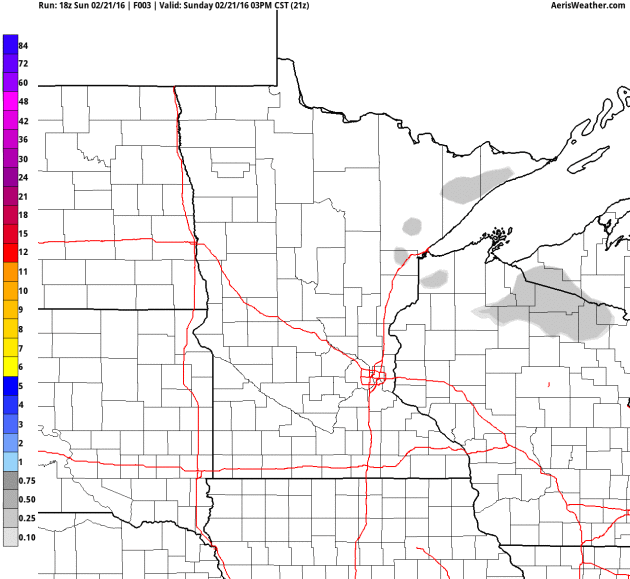
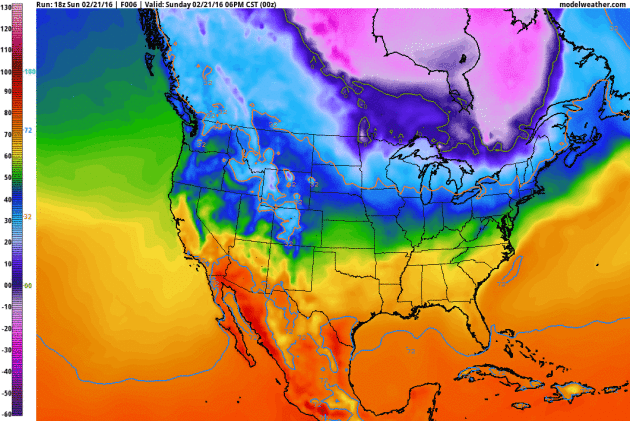
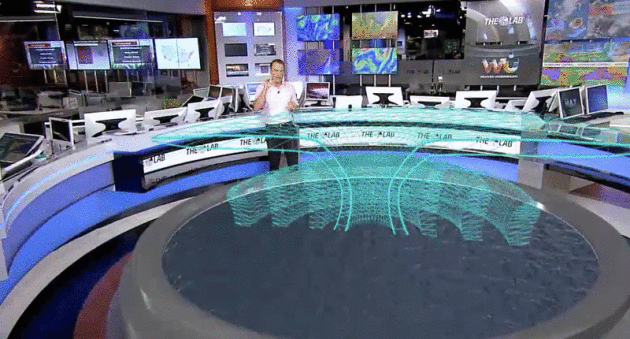
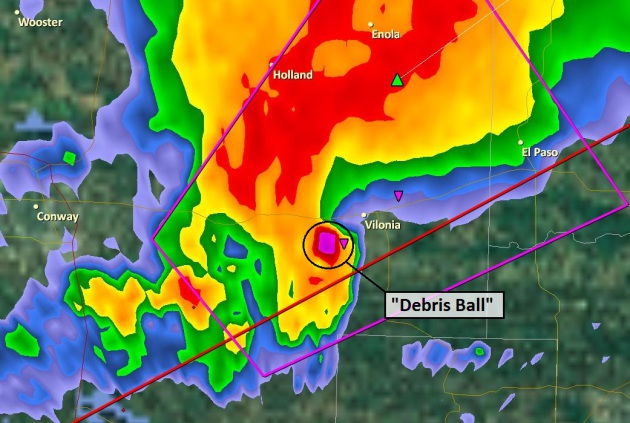
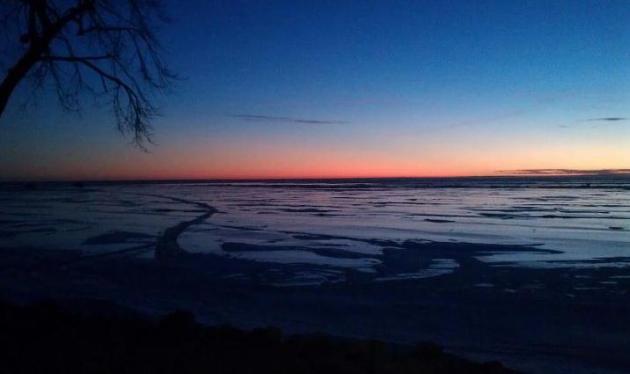

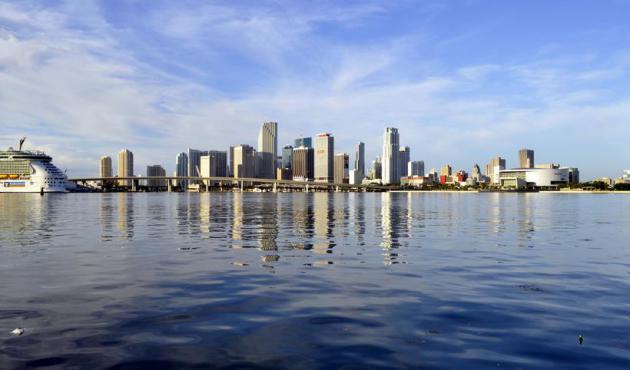
I apperciate your work that makes this blog so knowledgeable in getting the disvanteages of the global warming..
ReplyDeleteThankx for the hard Work..
Global Weirding News